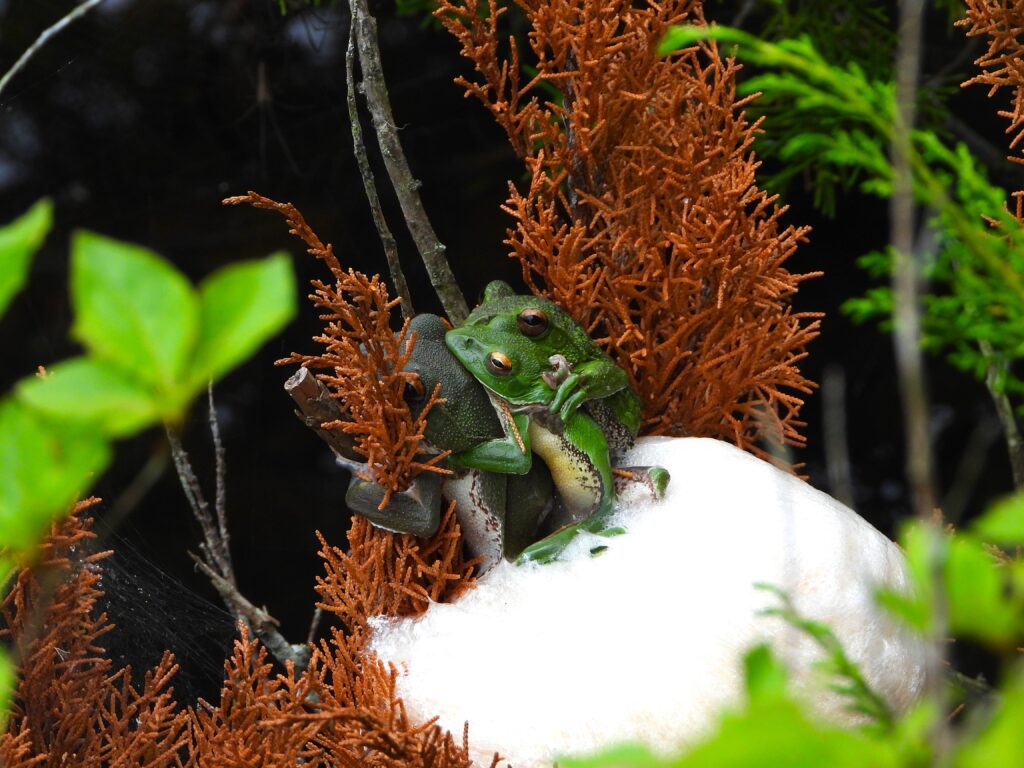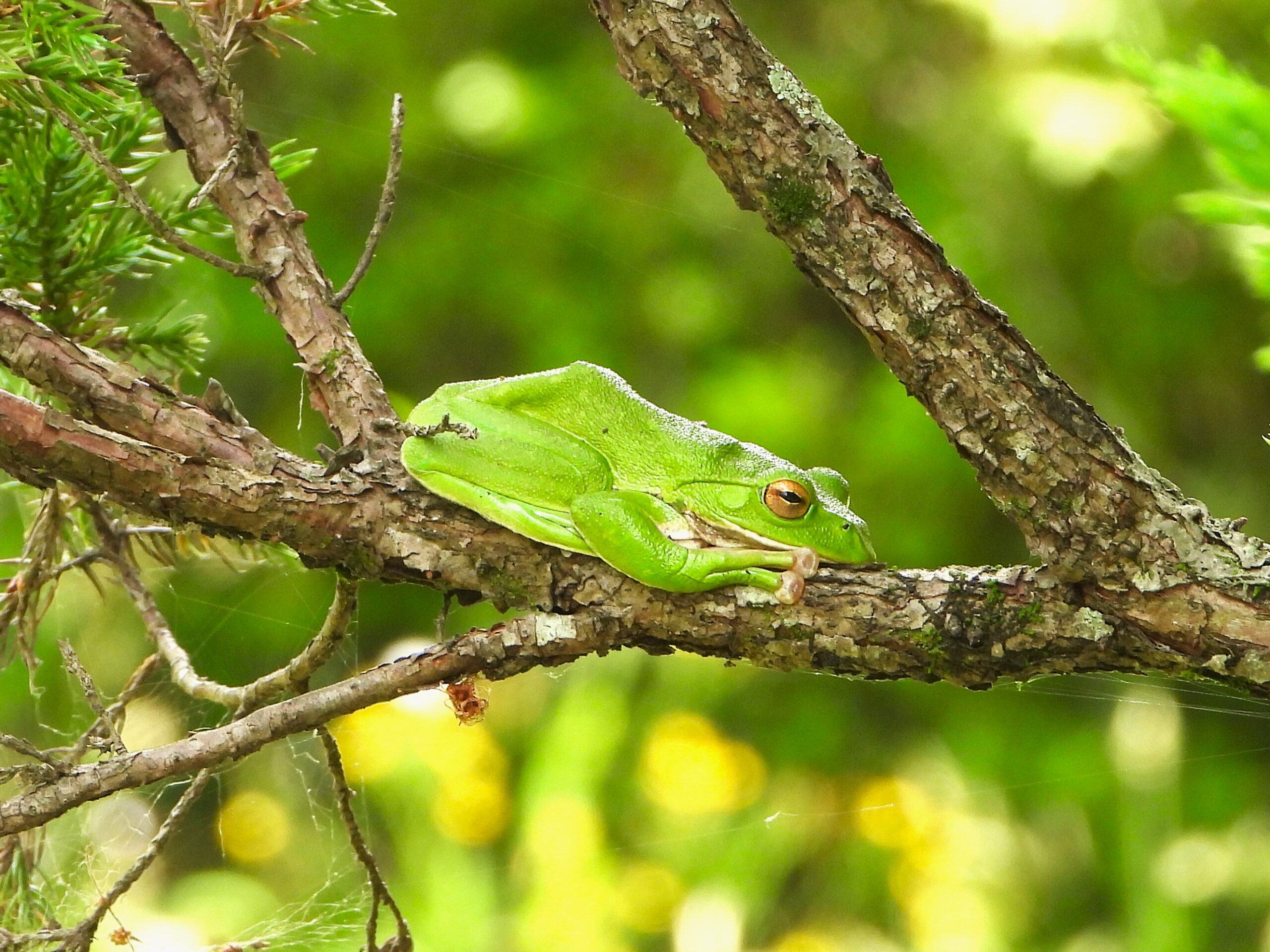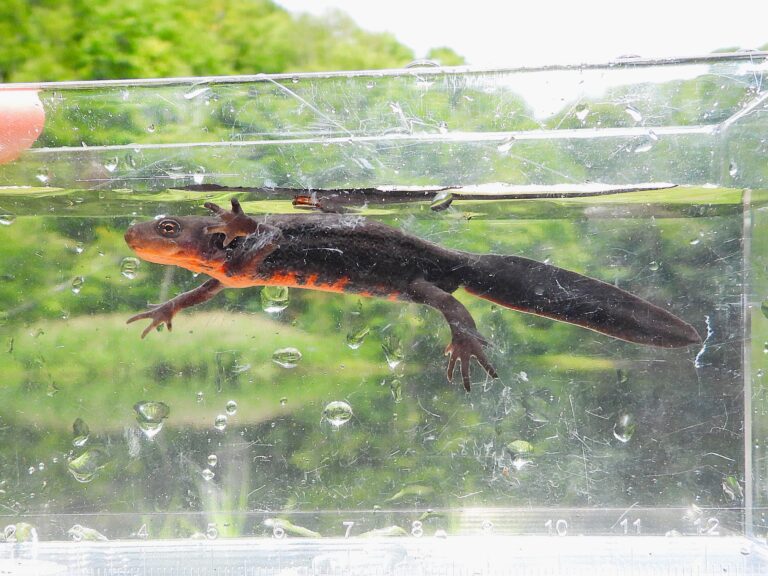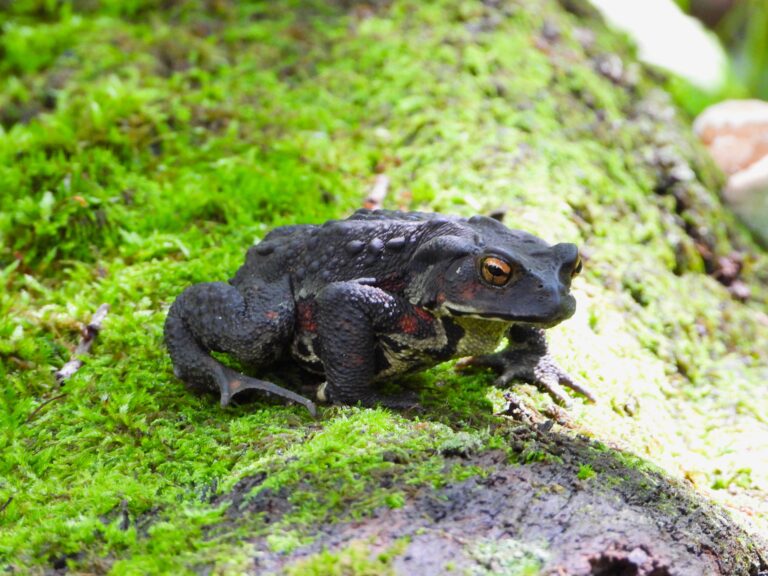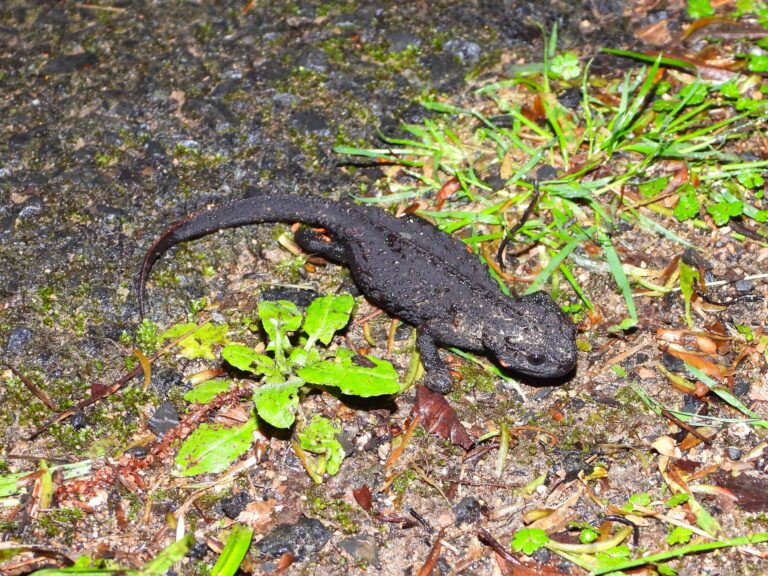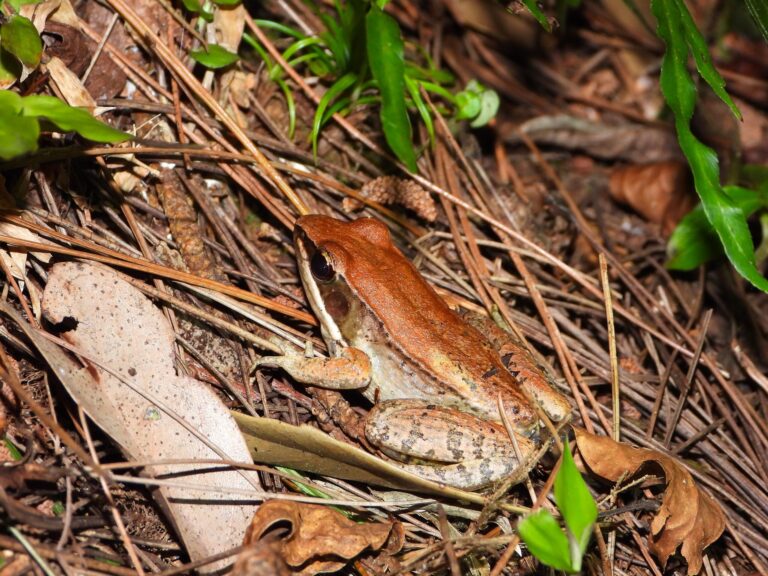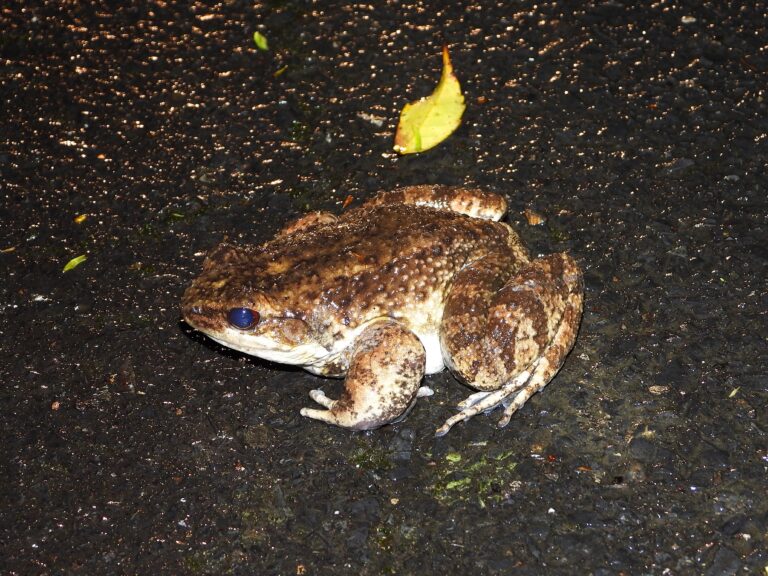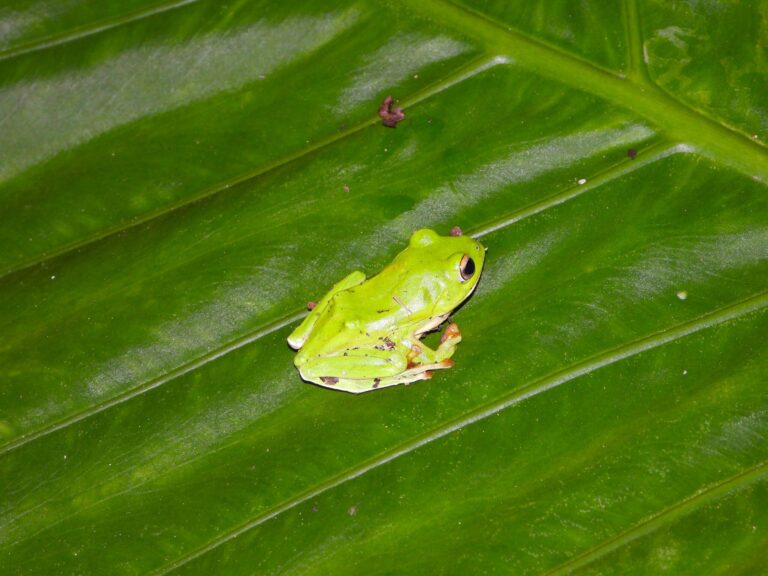Forest Green Treefrog (Zhangixalus arboreus) – Wildlife of Japan
Introduction
The Forest Green Treefrog, known in Japan as “Moriaogaeru,” is an arboreal rhacophorid endemic to Japan. It is famous for its foam nests suspended over forest ponds in early summer. The species was long placed in Rhacophorus, but current taxonomy recognizes it as Zhangixalus. It occurs naturally on Honshu and Sado Island, with introduced populations on Izu Ōshima.
Appearance
Adults are medium-sized, with a vivid leaf-green dorsum and large round toe pads for climbing. Females are larger (6–8 cm snout–vent length) than males (4–6 cm). Coloration varies from uniform green to mottled with dark patches. The large eyes are well adapted to nocturnal activity.
Habitat
The species inhabits forested hills and mountains, extending into lowland woods. It spends most of its time in trees and shrubs near still water such as ponds and quiet streams with overhanging branches.
Behavior
Primarily nocturnal and arboreal, males call during the breeding season from vegetation above the water. Their call consists of 2–6 short, rattling clicks. Outside breeding, individuals often rest quietly on foliage high above the ground.
Diet
A generalist predator of invertebrates, it consumes katydids, crickets, cicadas, spiders, and other relatively large prey compared to its size.
Reproduction
Breeding occurs mainly from late May through June (regionally May–July). Females create white foam nests on branches that overhang water. Often, several males attend one female and contribute sperm during oviposition. A clutch typically contains 300–800 eggs. After about one week, the hatching tadpoles drop from the foam nest into the water below.
Conservation
Globally assessed as Least Concern (LC) by the IUCN, though locally impacted by habitat loss, pond infill, and predation. Eggs and tadpoles face natural predation pressure from newts, aquatic insects, and birds. Important breeding sites such as Hekubunuma (Fukushima, designated 1941) and Oyanuma (Iwate, designated 1972) are protected as Natural Monuments in Japan.
Author’s Impression
During the breeding season, Forest Green Treefrogs gather around ponds. Because their green bodies blend with tree trunks and leaves, spotting them is not easy. Search carefully on branches and foliage, and rely on their distinctive calls to locate them. Watching tadpoles “rain” from foam nests after a summer storm is one of the most memorable natural spectacles I’ve ever seen.
